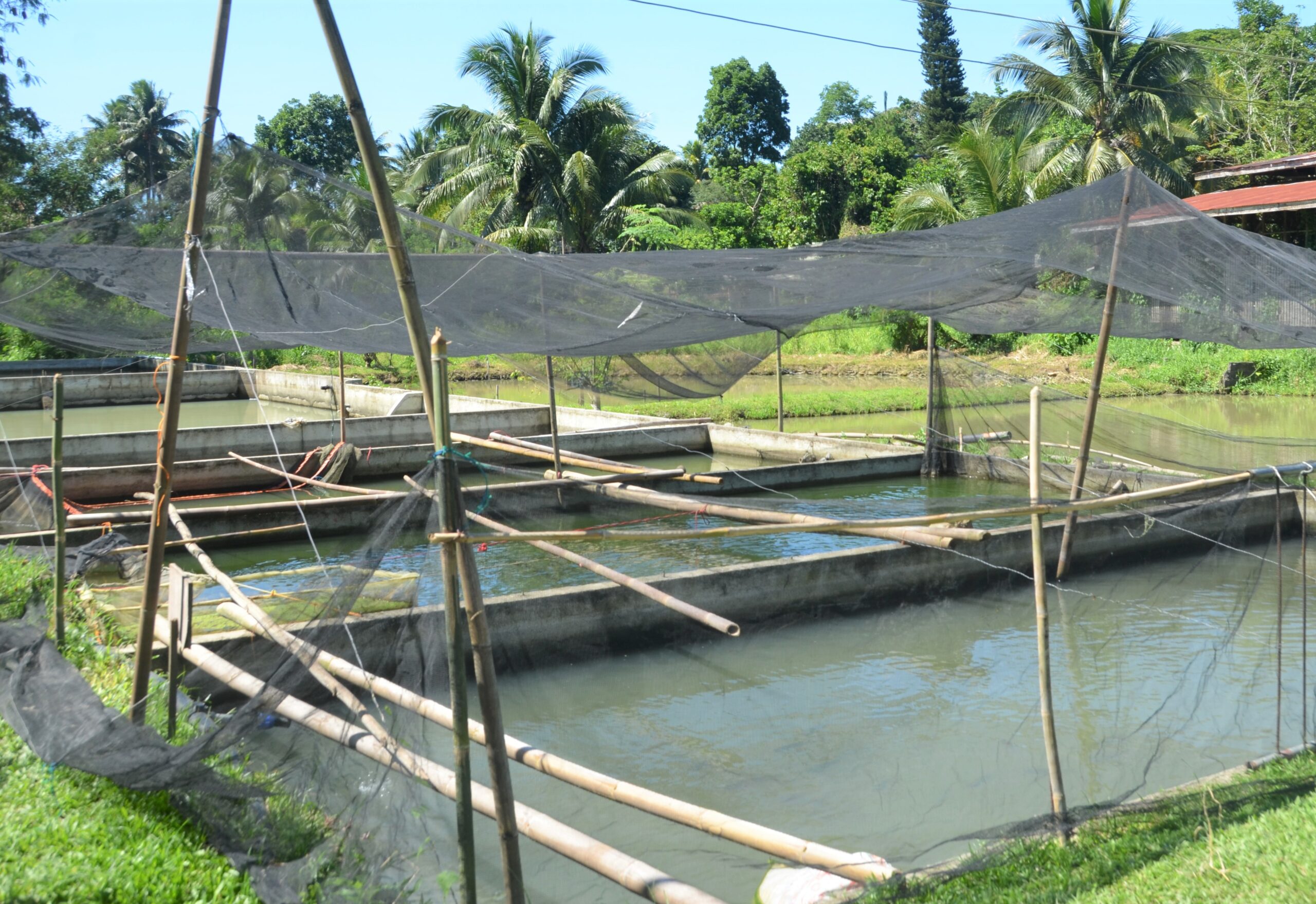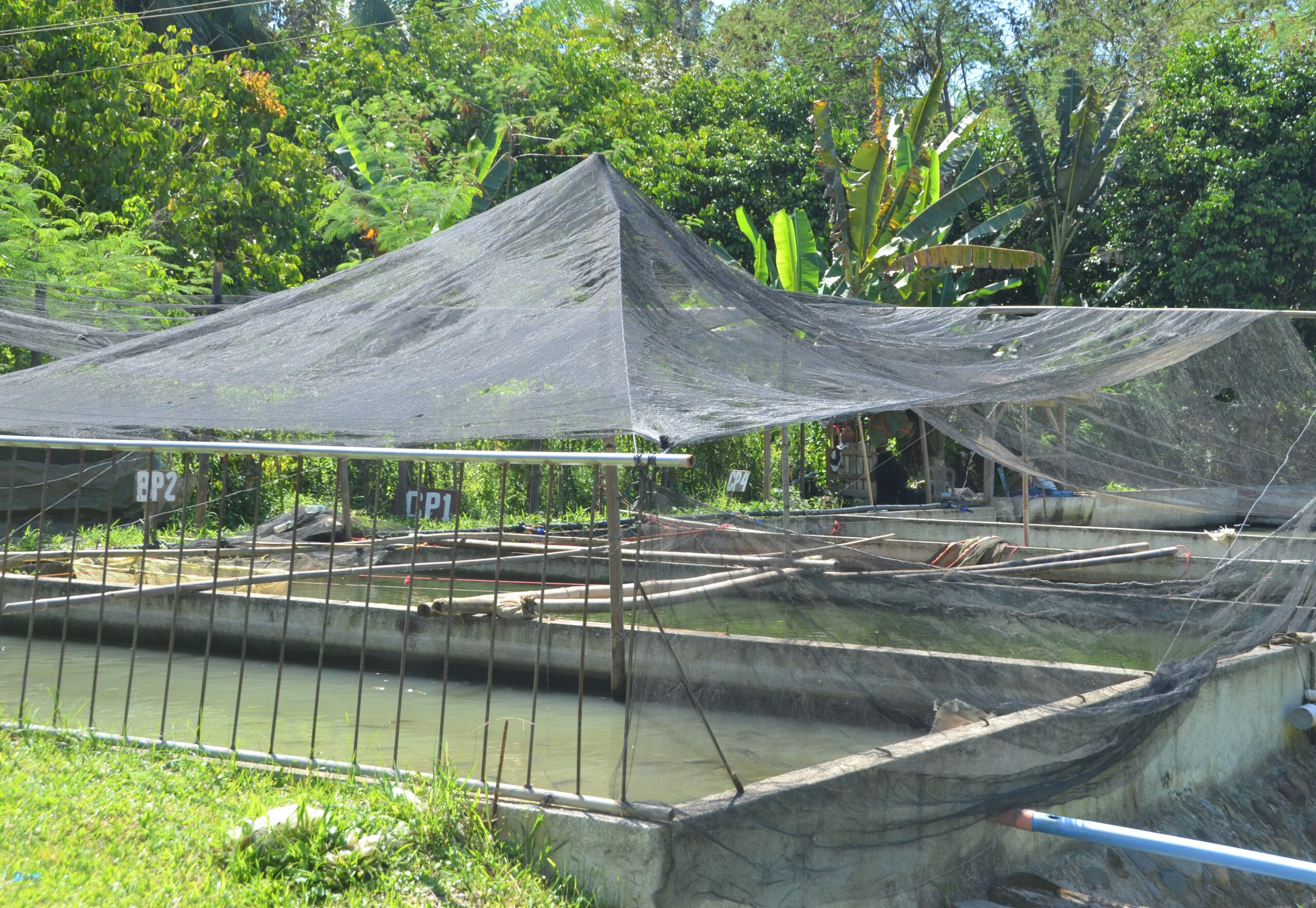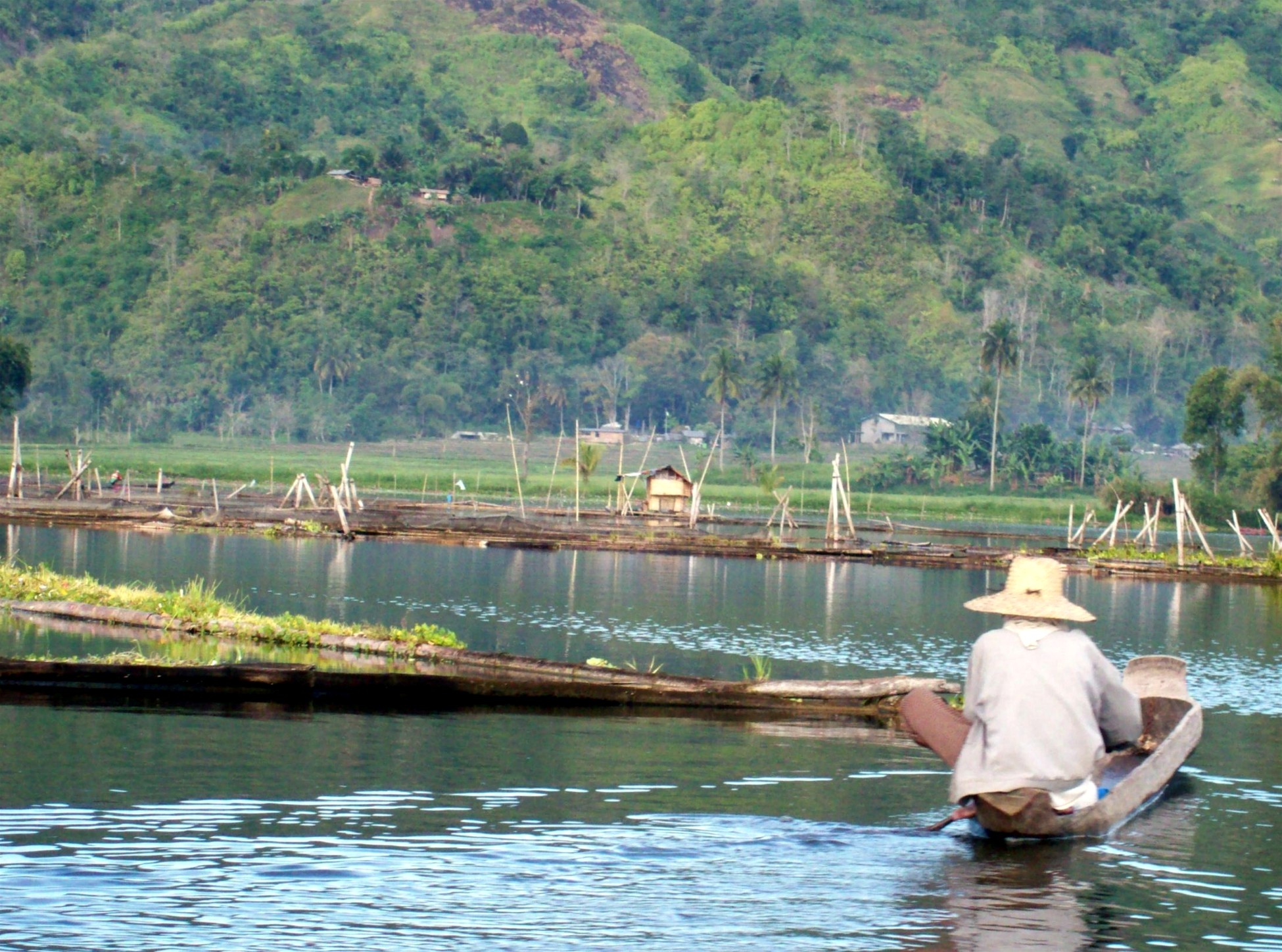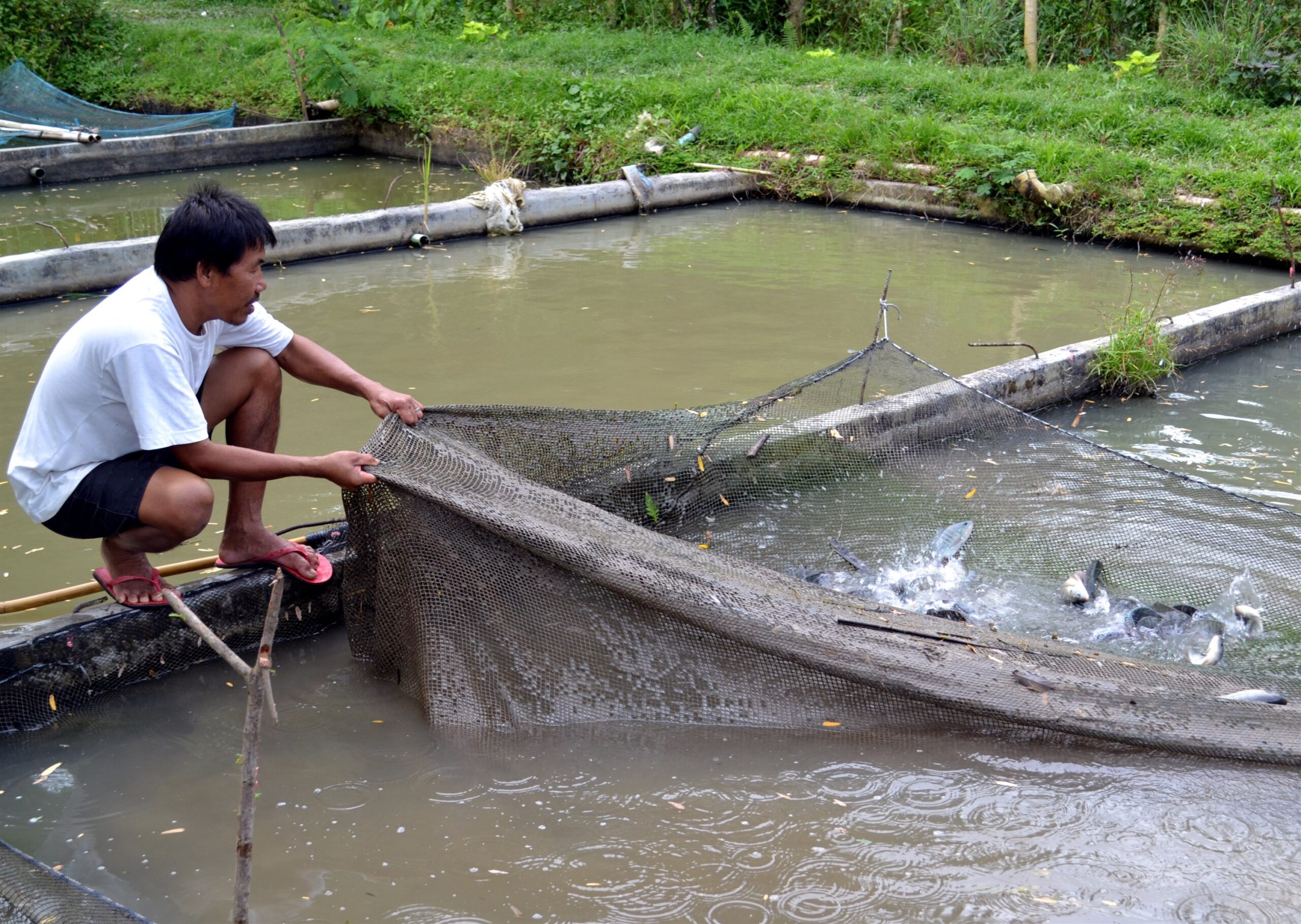Text and Photos by Henrylito D. Tacio
“No fish – with the probable exception of the common carp – is more widely cultured than tilapia,” wrote John E. Bardach, John H. Ryther, and William O. McLarney, authors of Aquaculture: The Farming and Husbandry of Freshwater and Marine Organisms.
It was British naturalist A. Smith who gave the fish its name in 1840. The word tilapia is derived from the African bushmen’s word for “fish.” According to Ethelwynn Trewaves of the British Museum’s (Natural History) fish section, the natives’ word commenced with a clicking sound that Smith interpreted as til.
Fishery experts dub tilapia as “aquatic chicken” because it possesses many positive attributes that suit them for a wide range of aquaculture systems. For one, tilapia tolerates a wide range of environmental conditions. For another, it is highly resistant to diseases and parasitic infections.
Other good traits of tilapia include excellent growth rates on a low-protein diet, ready breeding in captivity, and ease of handling; and, more importantly, wide acceptance as food fish.
After bangus (milkfish), tilapia is now the second most important fish in the Philippines. It has gained popularity among Filipinos who cooked the fish in different ways. It can be either fried or grilled. It can also be made into a sinigang (a sour soup using tamarind, santol, guava, or calamansi as a base) and paksiw (similar to sinigang, only it uses vinegar).
In fact, tilapia has replaced galunggong (scad) as the poor man’s fish. Nutritionists claim that 100 grams of tilapia provides approximately 93 calories, with one gram of fat (0.5 grams saturated), 55 milligrams cholesterol, 37 grams sodium, 0.5 milligram iron, 19.5 grams protein, and 90 milligrams Omega-3 fatty acids.
More and more Filipino farmers are now raising tilapia in their backyards and ponds. But the problem is the source of tilapia fingerlings. Although tilapias are prolific when it comes to breeding, the hitch is the production is not enough. Some fingerlings don’t survive because of the warm waters where they were hatched.
This is where aqua shade technology comes in. This involves the installation of netting materials on top of the pond during the summer months. It is proven to reduce water temperature by more than 3°C during the hottest period of the day.
“The favorable conditions for breeding that is provided by the technology is expected to increase spawning rate and seed or fry production by more than 100 precent (%) in both pond-based and hapa-based seed production systems,” said the Department of Science and Technology (DOST).
The DOST funded the two-year project, “Promotion of Aquashade Technology in Luzon to Increase Low of Nile Tilapia Seed Production During Warm Months,” which was initiated by the Central Luzon State University. Dr. Emmanuel M. Vera Cruz led the study which was financially supported by the DOST’s Philippine Council for Agriculture, Aquatic and Natural Resources Research and Development (PCAARRD).


“The technology helps improve tilapia production in the Philippines affected by increasing water temperatures especially during warm months of the year,” the DOST said in a press release. “Warmer water temperatures hinder fish reproduction.”
After the success of its study, the CLSU is now promoting the technology in various parts of Luzon. Eleven hatcheries in Nueva Ecija, Pampanga, Tarlac, Isabela, Batangas, Laguna, and Albay have already installed aquashade technology in their farms.
Tilapia hatchery operators can consider different available aqua shade designs. The G.I. pipe frame design uses G.I. wires to support the greenhouse net for shading. It is durable and long lasting. It can withstand strong winds brought by typhoons.
On the other hand, aqua shade design that uses bamboo frame made of bamboo poles design with the lowest input cost utilizes bamboo as poles. Greenhouse net (CCM208-2/W-W-SLV) with 40% shade effectivity (3.6m x 50m, silver color) is recommended for the aqua shade technology.
Romel Martinez, owner of R2M Aquafarm located in the Science City of Muñoz, Nueva Ecija, is one of the recipients of the project. He attested increase in production and income using aqua shade technology since 2021, despite adverse extreme weather conditions.
In Davao Region, the Mindanao Baptist Rural Life Center (MBRLC) in Kinuskusan, Bansalan, Davao del Sur is also doing the same thing in their tilapia ponds.
“We have so many farmers who come to the center to buy tilapia fingerlings,” said Jethro P. Adang, MBRLC director. “When we read about the aqua shade technology, we tried to adopt it in our farm.
“Sure enough, our fingerlings production increased,” he continued. “Now, farmers can buy the tilapia fingerlings they need in their farms. In the past, some came to the center only to find out there was no stock anymore.”
“Fish is the main source of protein for the Filipino,” Adang said.
On the average, every Filipino consumes 98.6 grams of fish and fish products each day, a study of the DOST’s Food and Nutrition Research Institute (FNRI) showed.
“Raising tilapia is a win-win situation for farmers,” Adang said. “The family can have their free source of protein and they can have additional income when they sell whatever surplus they have.”
The MBRLC is a good source of tilapia fingerlings. Farmers who want to undergo tilapia culture can also avail the training program it offers. “Our center is open to those who are interested in raising tilapia in their backyards or farms,” Adang said.


There’s more to tilapia than just providing food. In the United States, tilapias are stocked in the canals that serve as the drinking water sources for the cities of Phoenix, Mesa, and others. The fish reportedly help purify the water by consuming vegetation and detritus, thus greatly reducing purification costs.
Tilapia also serves as a natural, biological control for most aquatic plant problems. Tilapia consumes floating aquatic plants, such as duckweed watermeal, the most “undesirable” submerged plants, and most forms of algae.
In Thailand, tilapia is becoming the plant control method of choice in reducing, if not eliminating, the use of toxic chemicals and heavy metal-based algaecides. In Kenya, tilapia helps control malaria-causing mosquitoes. Tilapia consumes mosquito larvae, which reduces the numbers of adult females, the disease’s vector.

